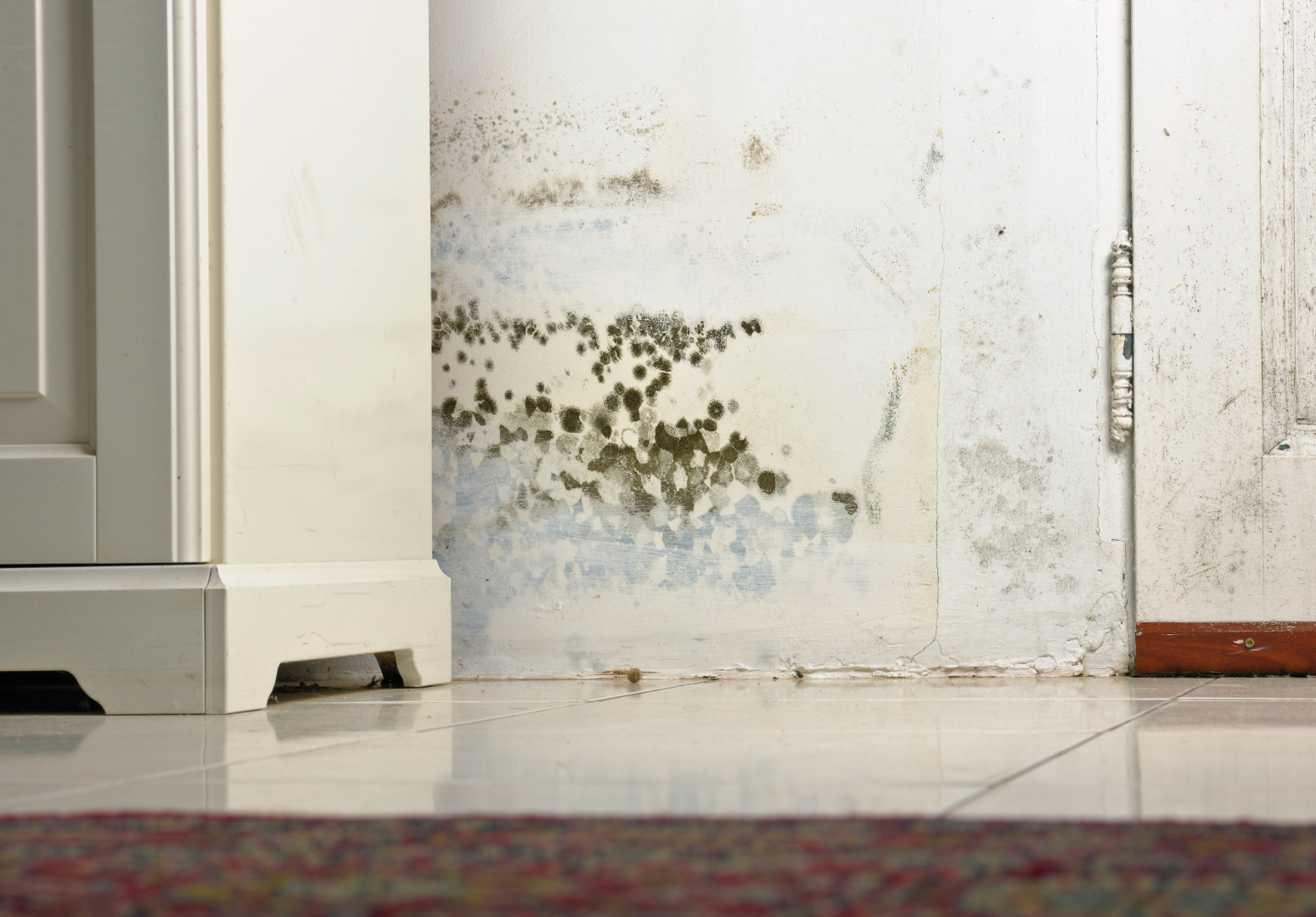Owning or renting the home of your dreams is great. But all properties require upkeep so that they can remain perfect for the long haul. While it might seem as though there is always maintenance or repairs that need to be done, some of them should be prioritised above others – one of them is mould.
The reason that mould shouldn’t be left untreated is that it poses a health risk to house occupants, both people and pets. According to the International Center for Toxicology and Medicine, mould is thought to be present in over 70% of homes. Furthermore, the same study revealed that the majority of homes across the globe have Stachybotrys chartarum – commonly referred to as black mould – spores in them. These spores can lead to concerns far greater than a peeling paint job.
What causes mould?
‘There are various causes of mould,’ explains Martin Brougham-Cook, senior inspector at Property Management Solutions. ‘The most common are moisture intrusion from the outside, poor ventilation and high humidity levels, all of which create the perfect conditions for mould spores to germinate and flourish.’ Even if you can not initially see it, it can give off a damp odour to let you know that it’s present.
While mould is unlikely to cause any structural damage to your property, moisture intrusion still leaves its mark.
‘It can wreak havoc on porous surfaces such as walls, floor and roof coverings, and ceiling boards,’ warns Martin. ‘A bigger concern is that, if left untreated, it can and will be a major health risk. This is why it is recommended that all types of mould are removed.’
Why managing mould matters
While not everyone who is exposed to mould will have an adverse physical reaction, it is still linked to a variety of health concerns. Most of them affect the respiratory system, with a 2016 study by the Center For American Progress indicating that around 40% of asthma attacks are triggered by the household presence of allergens including mould.
Chronic sinus infections and allergy-type symptoms have also been associated with mould exposure.
Not all types of mould are the same though, as some of them are more dangerous than others. Black mould, or toxic mould, is one of the unsafe variants. ‘Black mould is a fungus that produces mycotoxins,’ says Martin. ‘In some cases, exposure to it can lead to a condition called mycotoxicosis.’
Symptoms of mycotoxicosis include exhaustion and general discomfort, mental impairment, breathing problems and damage to internal organs. ‘This is why this highly toxic mould should be combated as soon as possible for optimal living conditions.’
Repair and restore
In order to treat mould, you first need to find the source of the problem. This should be done by calling in professionals who are trained in locating the leak and diagnosing the severity of the situation.
‘Before starting to remove the mould, you must first address what is causing it,’ advises Martin. ‘In many cases, it’s a result of moisture intrusion, which should first be patched up and sealed to prevent further damage. Poor ventilation is another common cause, and can be addressed by opening windows and doors or installing an extractor.’
If you have sealed up the leaks and want to tackle the mould yourself, there are several DIY solutions that can help to break it down for a squeaky-clean surface. ‘The areas affected by mould can be cleaned with a 50-50 mixture of bleach and water, a 30% hydrogen peroxide and water mix or a 70% vinegar and water mix. This will get rid of the build-up and leave your walls and surfaces looking and feeling fresh.
All this will result in the mould no longer posing a threat to you and your family’s well-being.
Make prevention a priority
In many cases, mould in your home can be prevented. Here are some tips to stop it from forming in the first place:
• Make sure that your rooms are adequately ventilated, allowing for steam or air build-up to be able to flow freely. Installing extractor fans in areas such as bathrooms and kitchens can also help to prevent mildew and mould.
• Check that there are no leaks in your property’s roof, walls or plumbing system. This can result in moisture intrusion and provides the perfect environment for spores to grow and multiply.
• Damp and mould really thrive in warm and humid environments. Because of this, keeping a room’s humidity level below 50% using a dehumidifier or air conditioner can help to keep spores from setting in.
• Without moisture, mould can not grow. One way to prevent it is to tend to wet surfaces as soon as possible. Spills on carpets, furniture and bedding should be tackled as they generally take longer to dry out thoroughly.
Words: Hellen Wallace | Photography: Gallo/Gettyimages, Unsplash







